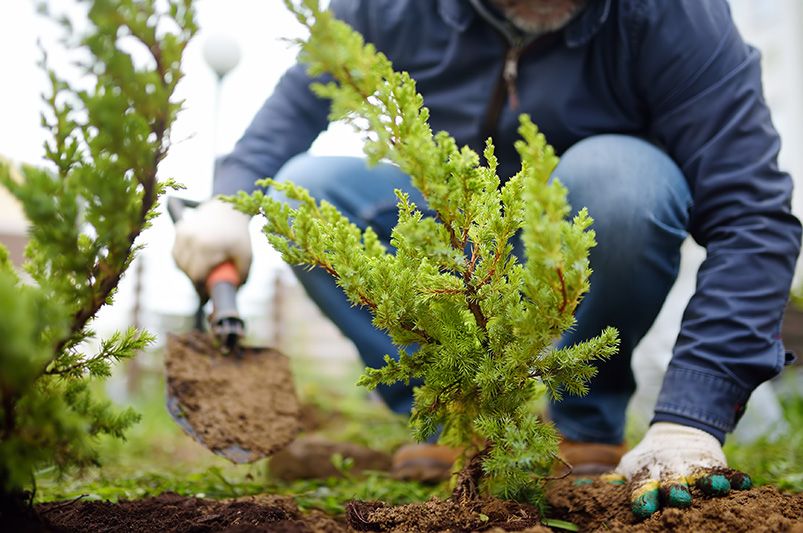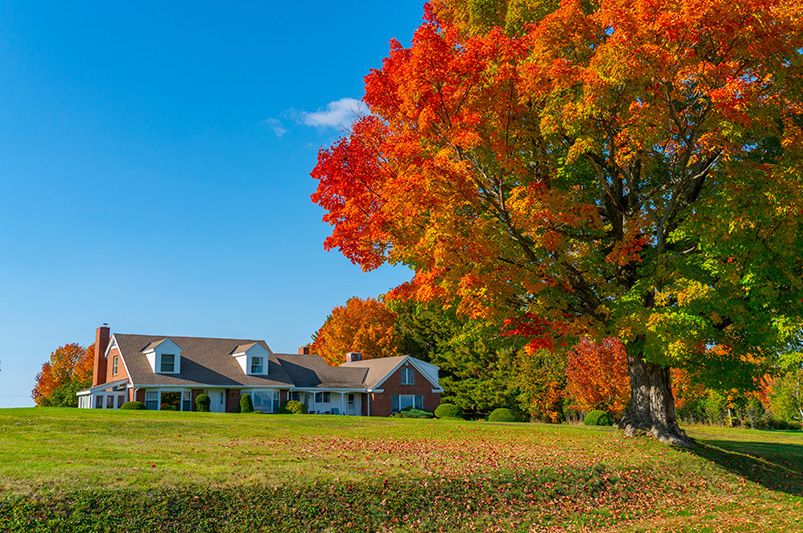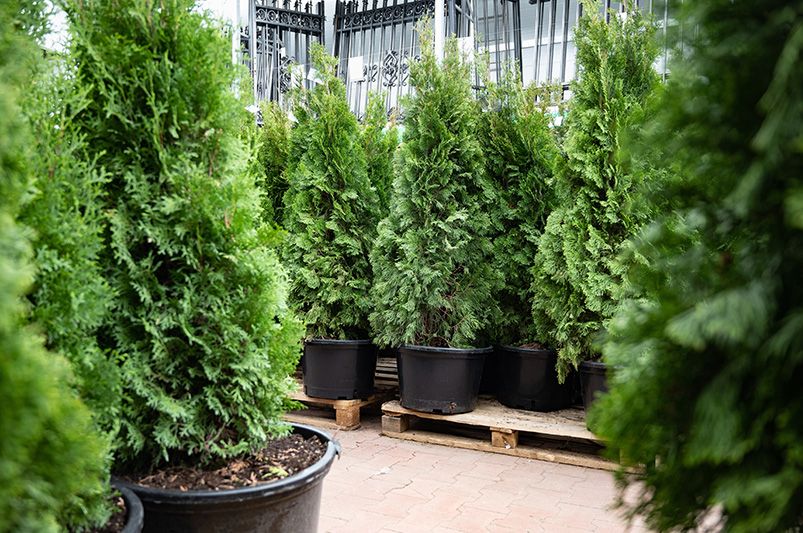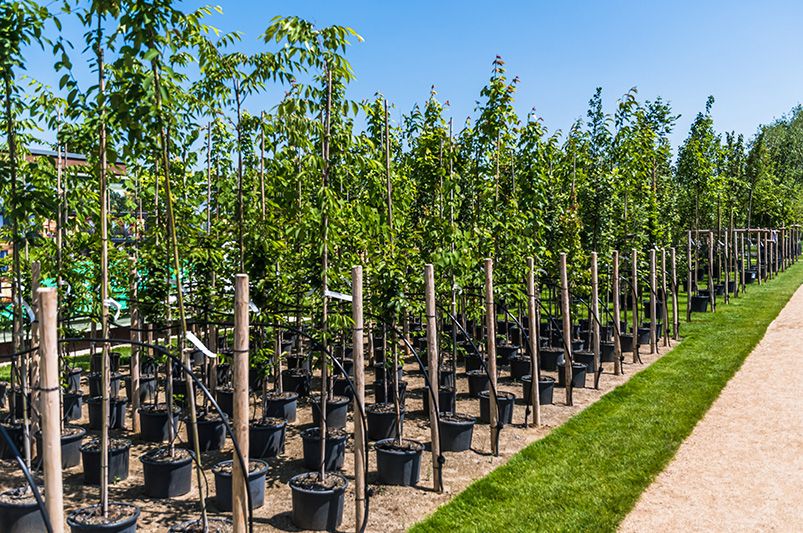
Expert Guide: How to Plant Different Types of Trees
Published: 28/10/2024 | Updated: 28/10/2024
Key Highlights
- Choosing the right tree for your climate and soil type is crucial for its survival.
- Fall and early spring are ideal times for tree planting, allowing for sufficient root establishment.
- Proper planting depth is essential, with the tree's root flare level with the ground.
- Regular watering is critical, especially during the first few years, to support healthy growth.
- Mulching around the tree helps retain moisture, regulate soil temperature, and suppress weeds.
Introduction
Planting a tree is a great way to help the environment and improve your property. Choosing the right tree for your planting site is very important. You also need to know how to plant it correctly. By doing these things, you can help your tree live a healthy life. This guide will give you helpful tips on how to plant various types of trees so they can thrive over the long term.


Essential Steps Before Planting Trees
Before you start digging, planning is very important. Take time to look at your planting site. Check things like sunlight, soil type, and how much space you have. Think about why you want the tree. Do you need it for shade, privacy, or just for looks? Once you understand your site and what you want, you can choose the right tree species.
When picking a tree, look into how it grows, how big it gets, and what it needs. Choose tree species that grow well in your area's climate and soil. If you are unsure, talk to someone at a local nursery or an arborist. They can help you choose the right tree.
Selecting the Right Type of Trees for Your Climate
Choosing the right tree for your climate is very important for its health. Trees that fit well in their surroundings can grow strong roots, fight off bugs and diseases, and handle bad weather better.
Look at the temperatures, rainfall, and chances of difficult weather like drought or frost in your area. Learn about different tree species and pick the ones that grow well where you live.
For example, deciduous trees show bright colors in fall. Evergreens keep their green color all year. Each type has benefits and downsides, which depend on the climate.
Understanding Soil Needs for Different Tree Varieties
Just like trees prefer different climates, they also need certain types of soil. It is important to check your soil type and how well it drains. Doing this helps your tree's roots get the nutrients and water they need to grow well. Different trees need different soil, so knowing what your soil is like is very important.
You should test the pH level of your soil to find out if it is acidic or alkaline. This will help you choose tree species that will grow well in your soil's pH range. Also, look at how quickly your soil absorbs water to check its drainage.
Keep in mind that you can improve your soil to make it a better place for your trees to grow. For example, if you have clay soil, adding organic matter can help it drain better. If your soil is too acidic, you can add lime to raise its pH level.
Detailed Guide on Planting Various Tree Types
Planting a tree right is important for its future. When you use the right techniques for each type of tree, you help it grow better. The next part will explain how to plant both deciduous and evergreen trees.
These steps will cover how to prepare the planting hole and how to care for the tree after planting. Knowing these steps will help you avoid common mistakes and create a good environment for your tree to thrive.

How to Plant Deciduous Trees
When you plant deciduous trees that lose their leaves in the fall, timing is important. The best times to plant are early spring or late fall when the trees are not growing. If you are using bare root trees, soak the roots in water for a few hours before planting.
You should dig a hole that is two times wider than the tree's root system and the same depth. Place the tree in the middle of the hole. Make sure the root flare is level with the ground. After that, fill in the hole with soil and gently press it down to remove air pockets.
Once the tree is in the ground, water it well to help the soil settle. Adding a layer of mulch around the base of the tree, but leaving a few inches away from the trunk, will keep water in the soil, control the soil temperature, and reduce weed growth.

Planting Evergreens: Tips and Tricks
Evergreen trees keep their leaves all year. They need extra care when you plant them because they need moisture all the time. When you plant container-grown evergreens, gently break apart the root ball. This helps the roots grow outwards.
Dig a hole that is a bit bigger than the root ball. Place the tree so the top of the root ball is even with the soil around it. Fill in the hole, making sure there are no air pockets, and water it well.
Here are some more tips for planting evergreens:
- Put a 2- to 3-inch layer of mulch to help keep the soil moist.
- Protect new evergreens from strong winds as they can dry them out fast.
- Check the moisture levels of the tree often, especially when it is dry.

Conclusion
In conclusion, planting trees brings joy and helps the environment. It also makes your area look better. If you learn about the right tree types, soil needs, and how to plant them, you can make a healthy green space. Pay attention to your climate and soil for best growth. Deciduous and evergreen trees each need different care. By following these key steps, you can help create a greener future and appreciate the beauty of various trees in your area. For more tips and ideas, check out our detailed guide on planting different types of trees.
Frequently Asked Questions
What's the Best Season to Plant Trees?
The best time of year to plant trees is during their dormant season. This usually happens in the fall after the leaves fall off. It can also be done in late winter, around November, before the new growth starts.
How Deep Should I Plant a Tree?
A tree should be planted where the top of the root ball is even with the ground. If you plant it too deep, the tree roots can get suffocated. It is important to find the right place for each type of tree. This helps the tree grow properly.
Need Assistance for a Complete Landscape Makeover?
Shrubhub’s landscape design packages can significantly transform the lives of homeowners by delivering customized, professional landscaping plans tailored to their unique space and personal style. With the ease of online collaboration, you are guided step-by-step through a design process that fundamentally reshapes your outdoor environment. The result is an aesthetically pleasing and functional outdoor living area that maximizes the potential of your property.


